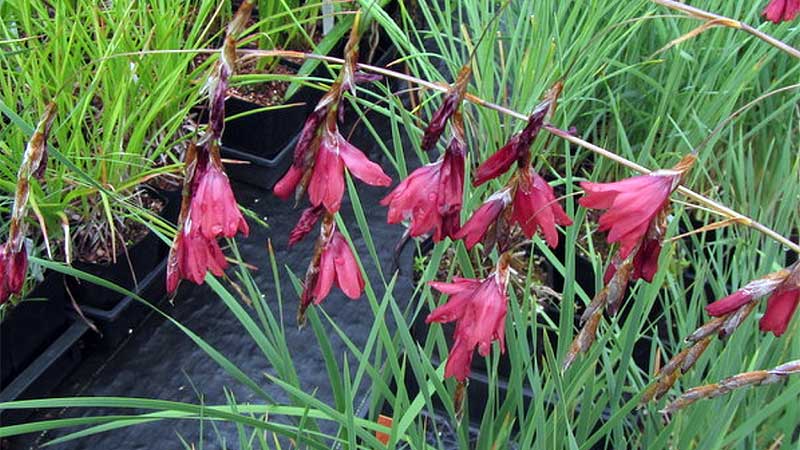Dierama plants have the reputation of being difficult to grow. Ruth Plant came to the July meeting of Ticknall Garden Club hoping to persuade otherwise. She has a large collection of dierama growing in her Stafford Garden. In fact, she now cares for the National plant collection.
They are evergreen, clump forming plants with long arching stems of delicate pendulous flowers which have earned their apt nickname of angel’s fishing rods. They grow from corms rather like crocosmia. The secret to growing success is a deep, moist root run and are very happy in cracks on paving. They need plenty of water in late Spring and Summer.
They don’t like to be crowded by other plants. They dislike disturbance so Ruth recommended removing a section from the outside of the plant rather than division. They do seed freely however but may not come true to type because of cross pollination.
They originate from the cooler mountain areas of South Africa. They began to be collected as far back as the 1770s but James Backhouse of York, a botanist and African Quaker missionary, popularised dierama igneum (flaming red) in this country in the 1800s when he established a nursery in York. David Steiger bred varieties with names from Shakespeare in the 1900s. The only book devoted to the subject of dierama was written by Brian Burrt in collaboration with Olivia Hilliard who travelled widely in South Africa and became an expert on its flora.
Ruth showed with photographs taken in her garden that dierama can be flowering from June to October. Their delicate tubular flowers with papery bracts can be pink, red, purple and even yellow and white. Deep inside each is a “face” with eyes that attracts pollinators.
Ruth Plant succeeded in persuading that perhaps dierama plants do not justify their difficult reputation after all. No doubt many in the audience would now be up to the challenge of trying them in their garden.






Leave a Reply